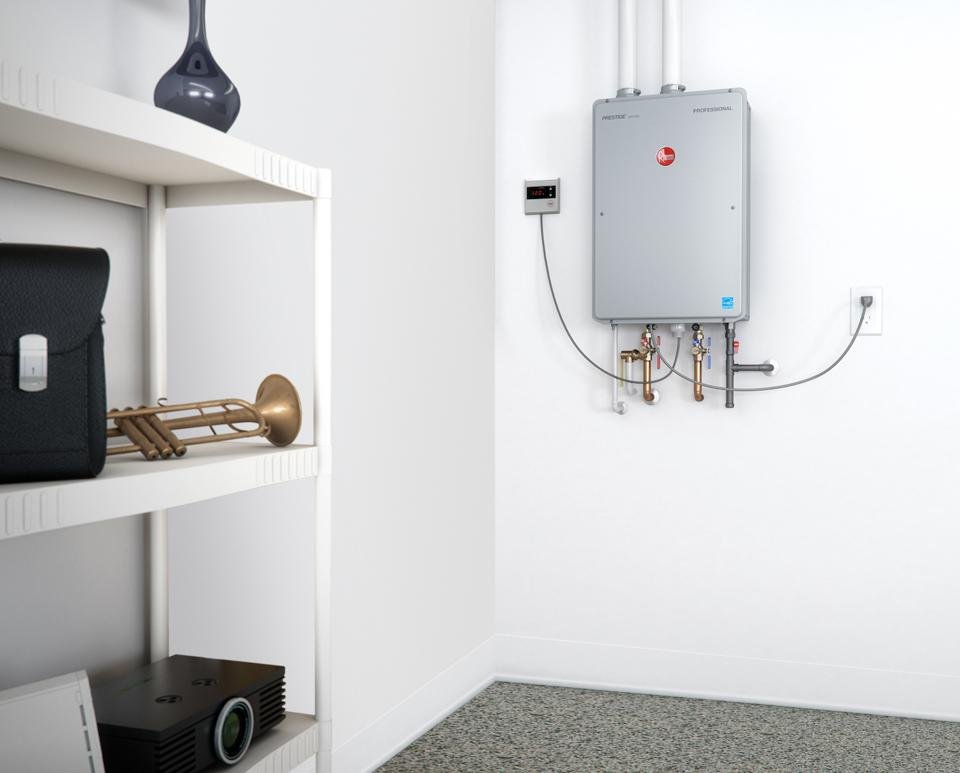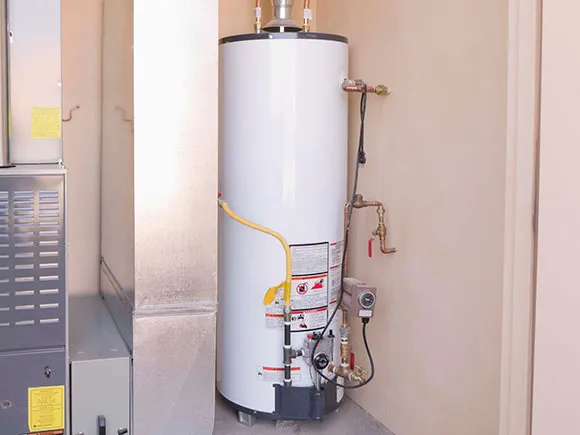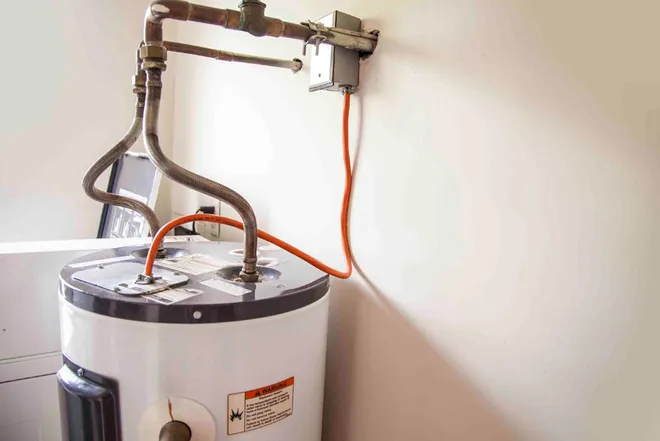Welcome to Alhambra, where the sunny days and cool evenings make a reliable water heater a household essential. In this guide, The Pro Plumbing will navigate the waters of water heater installation, ensuring your home gets the warm embrace it deserves. From choosing the right type that suits the city’s climate to understanding the local regulations that govern installations, we’ve got you covered. Think of it as your roadmap to cozy showers and a seamless integration of hot water into your daily routine. So, let’s embark on this journey, ensuring your Alhambra home is equipped with the perfect water heater setup for ultimate comfort.
Check Local Codes and Permits:
Before you dive into the exciting world of water heater installation, let’s start with a crucial step that often gets overlooked – checking local codes and permits. Think of it like getting the green light from the neighborhood before you throw a party. Every city or town has its own set of rules when it comes to home improvements, and water heaters are no exception. So, take a quick trip to your local municipal office or browse their website to find out what’s required. It might sound a bit bureaucratic, but trust me, knowing and following these rules not only keeps you out of trouble but ensures that your new water heater is installed safely and up to standards. Plus, nobody likes surprise visits from city inspectors, right? So, before you break out the toolbox, take a few minutes to check those codes and get the necessary permits – your future hassle-free showers will thank you!
Select the Right Location:
Now, let’s talk about finding the perfect spot for your water heater – it’s like choosing the MVP location for a crucial player in your home comfort game. First off, you want it to be accessible. Think about future maintenance – you don’t want your water heater playing hide and seek when it’s time for a checkup. Also, consider ventilation. Your water heater needs to breathe, especially if it’s a gas one. Check the manufacturer’s recommendations for clearance – give it some elbow room. And here’s a pro tip: if possible, position it close to where you use hot water the most. It’s like making sure your star player is on the field when you need them. Now, when handling water heater odor issues for homes, consider this prime placement as part of your strategy. So, scout your home, find that sweet spot, and give your water heater the VIP treatment it deserves!

Choose the Right Size:
Alright, let’s chat about picking the right-sized water heater – it’s like finding the perfect pair of shoes; you want them to fit just right. First off, think about your team size – that’s your household. A family of four might need a bit more horsepower than a solo player. Check the tank capacity – you don’t want it too small, leaving you with lukewarm showers, or too big, guzzling energy unnecessarily. Efficiency is the name of the game here. Also, consider your daily habits – if you’re hosting epic showers one after another, you might need a water heater with some endurance. So, don’t just grab the first one you see; take a moment, calculate your needs, and let your water heater be the Cinderella slipper of your home – a perfect fit for comfort! Now, when dealing with alhambra water heater repair for leaking temperature, having the right-sized unit plays a crucial role in maintaining optimal performance.
Turn Off Utilities:
- Safety First:
- Before you even think about utilities, put on your safety hat. We’re about to play with gas or electricity, so make sure you’re wearing your responsible adult pants.
- Locate the Gas or Electricity Shut-off:
- Find the shut-off valve for gas or the circuit breaker for electricity. They’re usually close to the water heater. If you’re not sure, consult your home’s manual or call in the experts.
- Gas Water Heater:
- If you’re dealing with a gas water heater, twist the dial on the gas valve to the “off” position. It’s like telling your water heater, “Take a break, we’ve got work to do.”
- Electric Water Heater:
- For electric water heaters, flip the switch on the circuit breaker labeled for the water heater. It’s like hitting pause on your favorite show – just for a little while.
- Double-Check:
- Once you’ve turned things off, double-check. Look, listen, and smell for any signs of trouble. If something seems off, don’t hesitate to call in the pros. Safety is non-negotiable.
- Keep the Area Clear:
- Create a safety zone. Make sure the area around the water heater is clear. No obstacles, no distractions. It’s like giving your water heater its own little stage – let it shine without any interference.
- Gloves On, Tools Ready:
- If you need to disconnect any pipes or wires, wear gloves. We’re being cautious here – safety gloves are like the superheroes of DIY.
Remember, turning off utilities is like the pre-game huddle – it sets the tone for a smooth installation. Safety check, utilities off, and let’s get that water heater into action!
Drain the Old Heater:
Now, let’s talk about giving your old water heater a graceful exit – it’s like letting an old friend bow out before the new star takes the stage. First off, grab a hose – it’s your trusty sidekick for this mission. Attach one end to the drain valve at the bottom of the old water heater. This is where the water is going to make its grand exit. Now, open a hot water faucet somewhere in the house. It’s like giving your water heater the cue to start its final performance. Then, open the drain valve and let the water flow. It might take a while, so be patient – it’s the water heater’s farewell tour, after all. Once the water stops, close the valve, and your old water heater can take a well-deserved bow. Just remember, it’s a messy job, so keep some towels handy. And there you have it – a smooth exit for the old guard, making way for the shiny new water heater to steal the show! Now, when comparing tankless water heaters to heat pump water heaters, this process of bidding adieu to the old unit becomes a crucial step in the upgrade journey.

Install the New Heater:
Alright, buckle up because it’s time to roll out the red carpet for your new water heater! Think of it as welcoming a VIP guest into your home. First things first, follow the manufacturer’s playbook – that’s your instruction manual. It’s like the map to a hidden treasure; it’ll guide you through the installation process step by step. Now, position the new water heater in its designated spot. Connect the pipes like you’re introducing old friends – make sure they get along well. If it’s a gas water heater, ensure the ventilation is top-notch, because nobody likes a cramped superstar. Tighten up all the connections, but don’t go Hulk on them – a snug fit is perfect. And remember, patience is key. Take your time, double-check everything, and before you know it, your new water heater is ready for its debut. It’s like hosting a blockbuster premiere in your utility room – the star of the show has arrived!
Ventilation is Key:
Let’s talk about giving your water heater the breath of fresh air it deserves – ventilation is the unsung hero of the installation show. Picture it like making sure your water heater has its own personal breeze. If you’re dealing with a gas water heater, it’s like giving it the VIP treatment. Check the manual for specific guidelines – it’s the roadmap to ensuring your water heater doesn’t feel stuffy. Most likely, you’ll need to provide some space around it, and possibly even install a vent pipe. Think of it as giving your water heater its own ventilation spa day. Good airflow not only keeps things safe but also helps your heater run at its best. So, when it comes to ventilation, just remember: let your water heater breathe easy, and it’ll reward you with years of reliable performance. It’s like giving it the gift of fresh air – the unsung secret to a happy, healthy water heater!
Check for Leaks:
- Post-Installation Inspection:
- Once you’ve got your water heater all set up, it’s time to play detective. We’re looking for leaks, the sneaky troublemakers that can dampen the mood.
- Grab a Flashlight:
- Shed some light on the situation. A flashlight is like your sidekick in this leak-finding mission. Illuminate every nook and cranny around the connections.
- Inspect Water Connections:
- Start with the water connections. Check where the pipes meet the heater. It’s like making sure everyone at the party is getting along – no drama allowed.
- Scan the Pressure Relief Valve:
- Your water heater has a pressure relief valve – it’s the safety net. Make sure there are no water droplets hanging around, indicating a potential issue.
- Check the Drain Valve:
- The drain valve is another suspect. It’s like the escape route for water, so make sure it’s not making a run for it when it shouldn’t be.
- Inspect Gas Connections (If Applicable):
- If you’re dealing with a gas water heater, check the gas connections. No hissing sounds or escaping gas allowed – safety first.
- Sniff Test (for Gas):
- Trust your nose. If you catch a whiff of gas, it’s like the leak setting off fireworks. Immediately shut off the gas and call in the experts.
- Drip Pan Check:
- If you’ve installed a drip pan underneath, check it for any unexpected guests (aka water). It’s like your safety net for leaks that want to play hide and seek.
- Patience is a Virtue:
- After all the connections have passed your scrutiny, play the waiting game for a few minutes. Sometimes leaks are shy and take a moment to make an appearance.
- Celebrate a Leak-Free Victory:
- If everything checks out, congratulations! You’ve conquered the leak inspection mission. Your water heater is ready to roll, leak-free and ready for action.
Remember, leaks are like party crashers – we don’t want them around. So, take your time, be thorough, and ensure your water heater is the star without any unexpected waterworks stealing the show!

Adjust the Temperature:
Now, let’s talk about dialing in the perfect temperature for your water heater – it’s like finding the Goldilocks setting, not too hot, not too cold, just right. First things first, locate the temperature control on your water heater; it’s usually a thermostat. Think of it as the DJ booth for your water temperature party. Now, the magic number here is around 120°F (49°C). It’s like the sweet spot that balances hot showers with energy efficiency. Turning it up might sound tempting for a steamy shower, but remember, safety is the main act. Higher temperatures can scald, especially for the younger members of your household. So, give that thermostat a gentle nudge to the ideal temperature, and you’ll have the Goldilocks of water heaters – just right for comfort and safety. It’s like setting the stage for the perfect shower experience, where everyone leaves happy and without any surprises.
FAQ’s:
What is the minimum clearance around a water heater?
The minimum clearance around a water heater is typically 6 inches to 1 foot, but it’s essential to consult the manufacturer’s guidelines for specific requirements.
What is the standard height for a water heater outlet?
The standard height for a water heater outlet is around 18 inches above the floor, but it’s advisable to check local building codes and manufacturer specifications for precise requirements.
How many water heaters does a house need?
The number of water heaters a house needs depends on factors like the household size, hot water demand, and space; many homes have one, but larger households or those with high-demand appliances may require multiple units.
Can I add a water heater to my house?
Yes, you can add a water heater to your house; however, it’s important to ensure your plumbing and electrical or gas systems can accommodate the additional unit, and local codes and permits are followed.
What is the side clearance for electric water heater?
The side clearance for an electric water heater is typically recommended to be around 2 inches, but it’s essential to refer to the manufacturer’s specifications for precise requirements.
CONCLUSION:
In conclusion, installing a water heater in your Alhambra home is a task that combines practicality and safety. By checking local codes and obtaining necessary permits, selecting an appropriate location, choosing the right-sized unit, and ensuring proper ventilation, you set the stage for a reliable and efficient water heating system. Remember to turn off utilities, drain the old heater, and meticulously check for leaks during the installation process. Adjusting the temperature to a comfortable and safe level is the final touch. Whether you’re upgrading or adding a water heater, following these guidelines ensures a smooth installation, providing your household with a consistent and enjoyable hot water supply. Always prioritize safety, consult local regulations, and don’t hesitate to seek professional assistance if needed. Here’s to a well-installed water heater, enhancing comfort in your Alhambra home!





